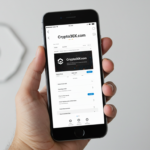Source: StockCake
The gaming industry is full of exciting opportunities for indie developers to showcase and monetize their games. But in a market as competitive as mobile gaming, it is crucial to employ the best strategies for your innovative ideas to gain traction and attract a loyal fan base. Game developers looking to enter the market can learn from the experiences and tactics of cryptocurrency developers, who employ effective strategies to place their coins on the leaderboard. One only needs to look at the astounding Bitcoin Price, or even the new but already massively promising Hamster Kombat Price, to see the genius behind their game plans.
Successfully selling your game hinges on knowing your audience and the right moment to launch. With a well-crafted strategy and a clear grasp of the key factors, you can turn your indie game into a profitable success. Here’s a comprehensive guide to help you navigate the journey, from setting the right price to considering essential factors for success.
1. Understanding the Mobile Gaming Market
Before you even think about selling your game, it’s crucial to understand the landscape you’re stepping into. The mobile gaming market is vast and highly competitive, with millions of games vying for attention. To stand out, you need a well-thought-out plan that considers your target audience, the platforms you’re releasing on, and the overall trends in mobile gaming.
Know Your Audience:
Understanding who your game is for is the first step in pricing and marketing it effectively. Are you targeting casual gamers, hardcore enthusiasts, or a niche group with specific interests? Knowing your audience helps you tailor your marketing efforts and set a price point that resonates with them.
Study the Competition:
Research similar games in your genre. What are their price points? How are they monetizing? What makes them successful or not? Analyzing your competition provides valuable insights that can guide your pricing strategy and help you position your game in the market.
2. Pricing Your Indie Mobile Game
Pricing is one of the most critical decisions you’ll make. The price of your game can directly influence its success, affecting everything from downloads to user satisfaction.
Free-to-Play vs. Paid:
One of the first decisions you need to make is whether your game will be free-to-play (F2P) or paid. The F2P model is highly popular in the mobile gaming space, offering the game for free and generating revenue through in-app purchases or ads. This model works well if your game has strong replay value or offers items that enhance the gaming experience.
On the other hand, a paid model might be suitable if your game provides a premium experience or targets a specific niche willing to pay upfront for quality content. If you go the paid route, pricing your game too high can deter potential buyers, while pricing it too low might undermine the perceived value of your work.
Consider the Cost of Development:
Your game’s price should reflect the time, effort, and resources invested in its development. However, you also need to be realistic and consider what the market is willing to pay. Balancing these two factors can help you set a price that’s both fair to you and appealing to your audience.
Discounts and Promotions:
Don’t underestimate the power of a well-timed discount or promotion. Offering your game at a reduced price during special events or holidays can boost sales and increase visibility. However, be cautious not to rely too heavily on discounts, as it can devalue your game over time.
3. Distribution Platforms
Choosing the right platform for selling your game is just as important as setting the right price. Each platform has its own audience, pricing structures, and revenue-sharing models.
Google Play Store vs. Apple App Store:
The two major players in the mobile gaming space are Google Play and the Apple App Store. Each has its pros and cons. Google Play offers a larger audience and lower entry barriers, but the competition is fierce. The Apple App Store, on the other hand, has a reputation for higher quality apps and a more affluent user base, but it can be more challenging to get featured.
Alternative Platforms:
Don’t overlook alternative platforms like Amazon Appstore or smaller niche markets like itch.io for indie games. These platforms may have less competition, allowing your game to stand out more easily.
Revenue Sharing:
Different platforms have different revenue-sharing models. For example, both Google Play and Apple App Store typically take a 30% cut of your sales. Consider this when setting your price, as it will affect your net earnings.
4. Marketing and Promotion
Even the best game won’t sell if no one knows about it. Effective marketing is key to driving sales and building a community around your game.
Build a Strong Online Presence:
Start by creating a website or landing page for your game. This will serve as the central hub for all your marketing efforts. Include screenshots, trailers, and a blog to keep potential players engaged. Social media is another powerful tool—use platforms like Twitter, Instagram, and Reddit to share updates, engage with your audience, and build a following.
Leverage Influencers and Reviews:
Influencers and reviewers can significantly impact your game’s success. Reach out to gaming bloggers, YouTubers, and streamers who cover indie games. A positive review or a feature in a popular gaming channel can drive a significant amount of traffic to your game.
App Store Optimization (ASO):
Just like SEO for websites, App Store Optimization (ASO) is crucial for getting your game discovered on app stores. This involves optimizing your game’s title, description, and keywords to improve its visibility. The more discoverable your game is, the more downloads it will get.
Paid Advertising:
If you have the budget, consider investing in paid advertising. Platforms like Google Ads and Facebook Ads offer targeted advertising options that can help you reach your ideal audience. However, it’s important to track the performance of your ads closely to ensure a good return on investment.
5. Post-Launch Support and Community Building
Your work isn’t done once your game is released. Post-launch support and community building are crucial for maintaining your game’s success and longevity.
Updates and Patches:
Regular updates and patches keep your game fresh and fix any bugs or issues that players encounter. This not only improves the player experience but also shows that you’re committed to your game’s success.
Community Engagement:
Engage with your community through social media, forums, and in-game events. A loyal fan base can become your biggest advocates, spreading the word about your game and helping you reach new players.
Collect Feedback:
Listen to your players and collect feedback. Whether through reviews, social media comments, or direct messages, player feedback is invaluable for making improvements and planning future updates or new projects.
Selling an indie mobile game is a multifaceted process that requires careful planning, strategic pricing, and continuous effort. By understanding your market, setting a fair price, choosing the right distribution platforms, and investing in marketing, you can increase your chances of success. Remember, post-launch support and community engagement are just as important as the initial launch—these efforts will help sustain your game’s popularity and keep players coming back for more. With the right approach, your indie game can not only survive but thrive in the competitive mobile gaming market.






